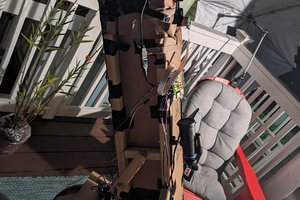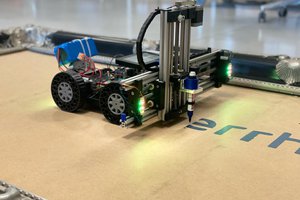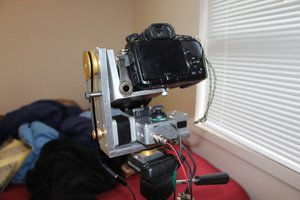If you have an idea that incorporates motion control of stepper motors you can go for cheap Arduino extension boards or for premade boards e.g. for 3D printers or expensive industrial solutions such as Siemens PLCs. If you go down the cheap road you have to do the wiring and you have to deal with a low level interface to the stepper motor, meaning you need to program on the level of a single step. Furthermore it is complicated to do operations such as simultaneous homing of two axes. To have something between the cheap root and the industrial we created the Monsterrhino products. They are thought to be plug and play , allowing you to start your project without concentrating on getting your motors to turn or low level programming such as setting microstepping and homing operations.
The Monsterrhino camera slider is made up of a linear slide that moves a motorized table linearly. The homing of this axis is facilitated without limit switch. This is possible due to an advanced MonsterrhinoMotion feature: the detection of motor stall - see by your self:
The motorized table has a mount for a phone sitting on a large gear, the mount allows tilting the phone to a desired angle. The motor of the table is used to rotate the camera slow and smooth through.
Additionally there is an external table that can be rotated. It can be used to place an item and rotate it while sliding the camera across it.
All three motors can run individually or in parallel thanks to the MonsterrhinoMotion card, a multipurpose stepper driver card that combines power management, stepper drivers, CAN and USB interface, encoder and limit switches, and a STM32 MCU that can be simply programmed using the Arduino IDE and the associated library. The 5” touch display is driven by a MonsterrhinoControl card connected to a Raspberry Pi 4. The MonsterrhinoControl card acts also as a power supply for the Raspberry Pi, converting the 24V supply of the MonsterrhinoContorl to 5V for the RPi. The Raspberry Pi runs a Python program that generates the GUI (tkinter) and converts the imputs to settings that are send to the MonsterrhinoMotion through CAN.
 Monsterrhino
Monsterrhino


 Boris Landoni
Boris Landoni